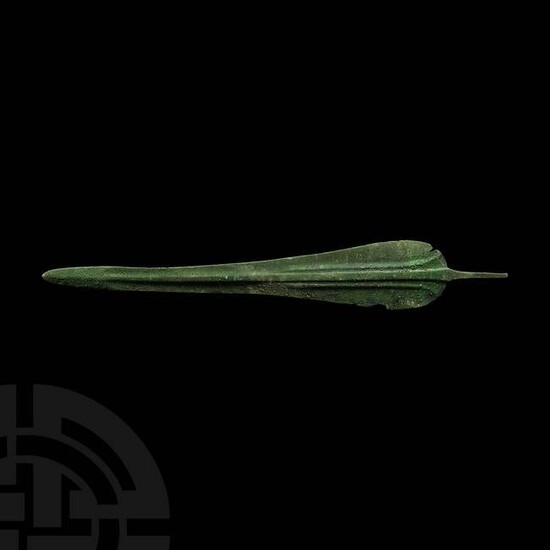North-Western Persian Dagger with Blood Channels
Early 1st millennium BC. A two-edged bronze sword blade, leaf-shaped with rectangular tang, corrugated midrib extending almost to the tip and flared at the shoulder, decorated with vertical grooves. Cf. Christie's, The Axel Guttmann Collection of Ancient Arms and Armour, part 2, London, 2004, item 36, p.33. 320 grams, 44.5cm (17 1/2"). Ex Abelita family collection, 1980-2015. The metalworking techniques used in making bronze weapons in early Iran were very complex. Surfaces were often finished in repoussé work, and some of the weapons were chased, others engraved. The ruling elites of warrior horsemen were buried in the graves with their weapons and horses which are the main sources of the Luristan and North-Western bronze weapons.
Condition Report: Fine condition.
View it on
Estimate
Time, Location
Auction House
Early 1st millennium BC. A two-edged bronze sword blade, leaf-shaped with rectangular tang, corrugated midrib extending almost to the tip and flared at the shoulder, decorated with vertical grooves. Cf. Christie's, The Axel Guttmann Collection of Ancient Arms and Armour, part 2, London, 2004, item 36, p.33. 320 grams, 44.5cm (17 1/2"). Ex Abelita family collection, 1980-2015. The metalworking techniques used in making bronze weapons in early Iran were very complex. Surfaces were often finished in repoussé work, and some of the weapons were chased, others engraved. The ruling elites of warrior horsemen were buried in the graves with their weapons and horses which are the main sources of the Luristan and North-Western bronze weapons.
Condition Report: Fine condition.



